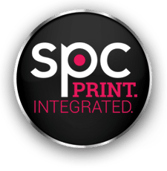Project Planning: How to Run a Successful Direct Mail Campaign, Part I
Have you ever gotten part way through a direct mail campaign and thought, “Why does working on this project feel like absolute chaos!?” There are so many moving parts to marketing campaigns, and although many businesses across most industries send out direct mail, it’s rare to find employees that are knowledgeable about the process. This is why it’s crucial to work closely with a commercial printer and develop an agreed upon plan. Regardless of your knowledge of direct mail, with a little assistance and project planning, anyone can make a campaign run smoothly.
Project planning is all about communication and looking ahead. Foresight allows you to avoid frustrating last-minute changes that can mess with your budget and timeline. Ensuring that your company’s internal team and the printer’s team are all on the same page from the start can save you from miscommunication and stress. Of course, we’re not all natural-born project planning experts. That’s why we’ve outlined the steps you should take at the start of every direct mail campaign below. (Side note: most of these steps can be taken to streamline any print project, not just direct mail campaigns.) This blog will help guide you through the first half of the process, up until you receive the printer’s proof of your project. If you’d like to improve organization within your company and begin running campaigns with ease, this is a great place to start...
- Every direct mail campaign should begin with meetings. Your initial conceptual meetings will most likely begin internally, but don’t wait too long to get a professional commercial printer involved. Even during the early stages of a project, your printer can offer valuable insight. Keep meeting until you’ve...
- Set your goals. Ask yourself, why are you launching this campaign in the first place? How will you know if it’s been successful? What are the Key Performance Indicators (KPIs) you’ll be measuring? There’s no point in running any marketing campaign without purpose, and it’s equally important to pay attention along the way and analyze in the end, otherwise you won’t know what worked versus what could be improved next time.
- Identify your target audience. Without knowing what kinds of people your mailers will be addressing, you won’t be able to make informed decisions about messaging, and the concept overall. Once you’ve set your goal, consider who you will need to receive these mailers and take action in order for your campaign to be successful. Then, discuss their demographics and psychographics. This can help to form your creative concept so that you can make print that truly engages exactly who it’s meant to.
- Determine a budget. Some people hesitate to make such hard and fast decisions so early on in a project, but the amount you can spend on a direct mail campaign will directly impact the concept. Some design just isn’t possible on a lower budget. Plus, part of budgeting for anything in life is accounting for unforeseen costs. If you remember to do so when deciding on numbers this early on, you will have given yourself some wiggle room for making alterations At least discuss your budgetary estimates during these initial meetings so everyone has an idea of what you’re working with.

- Work messaging and creative concept. Though not everyone on your team will be responsible for copy writing or graphic design, it’s important to discuss concepts as a group. Most brands have their own voice and style, so everyone involved with the project should be happy with the general direction the concept is heading before any individuals start working on the proofs.
- Establish an internal sign off process. Decide what will happen to the proofs once they're done. Identify who on your team needs to approve them before they can head to the printer. Figuring this out in advance is a great way to simplify the process, avoid miscommunication, and ensure that the project will move quickly through it’s timeline.
- Decide how the campaign is being measured for success. Revisit the goals you set and really determine what KPIs will be the most important for you to measure, and how you’re going to do that. What action or actions are you hoping the mailer recipients will take? Do you think getting them to do this will require additional mailings? Should your account representatives follow up via a phone call or email? Or will you be tracking website stats, such as landing page visits?
- Name your project. Everyone should be referring to the campaign and the print piece/pieces involved with the same titles to avoid confusion.
- Set timeline for...
- Internal concept/layouts proofs
- Final budgetary estimates
- Budget approval
- Final internal proof approval
- Printer’s time needed
- Mail processing time needed
- Time in mail pending postage classification (standard vs 1st class)

- Identify main points of contact. It should be clear who on your internal team is responsible for communicating with the printer. This individual must now identify the printer’s main contact. Most of the conversations should occur between these two, then any relevant information can be relayed to other team members from there.
- Assign responsibilities. Now that you know who the communication leader on your team is, the other tasks should be assigned.
- Who’s writing the copy?
- Who’s selecting the images?
- Who will design/prepare the art files?
- Who’s in charge of the distribution/mailing list?
- Perform any necessary list maintenance and get the list to the printer as soon as possible. This step is crucial because it helps to pinpoint the quantity of pieces that will be needed throughout the course of the campaign, how much distribution will cost, and it will solidify the timeline. Alongside making sure all your information is up to date, it’s important to normalize your list so you’re not including any excessive and unnecessary information. You should also make sure the formatting is consistent throughout your spreadsheet. If unsure about any aspect of your mailing list, feel free to ask your print service provider questions!

- Agree on the creative concept. Though you’ve already had some conversations about this in your initial meetings, the go ahead needs to be given to the team members who are playing a part in creating the first internal proof so they can get to work. However, before moving forward, be sure to get buy in from the boss. Whoever is responsible for giving final approval on this project should be involved from the conceptual level to avoid starting a project only to have it axed part way through.
- Outline print project specs, including...
- Size
- Color scheme
- Substrates
- Binding & Finishing
- Quantities
- Relay any brand compliance regulations to the printer. This can greatly affect the specs and although you may be very familiar with them internally, they could be new to the printer. Plus, many brands take the consistency of their logo usage and matching exact colors very seriously, so it’s extremely important to make this clear to everyone involved
- Discuss distribution. With the printer, you should nail down the shipping method, mail classification required, distribution speed and costs required. Remember that printers work with direct mail campaigns all day and are happy to share their knowledge of distribution with you so that your project can go as planned, or even better!
- Budget approval. By now, you should have all the information you need to run your budgetary estimates by the person in charge. Purchasing department will need a final dollar amount before handing job off to printer.
- Decide if there will be follow-up mailings. If your direct mail campaign requires a second round of outreach, now is the time to start thinking about your next print piece and when you’d like it to be distributed. Don’t forget, the whole point of project planning is to think ahead and be prepared. Kicking off a campaign but not following up can result in a waste of time and money. Finish what you started!
- Those responsible for copy, imagery, and layout should complete their tasks. Copywriting and graphic design are both artforms of their own, so we’ll leave that up to your professionals. But bear in mind that both require internal editing, so everyone should focus in order to remain efficient. In order to keep up with your project plan, the art file must be completed and sent to the printer in a timely manner. Even if they are not the lead communicator, the file preparer should ask the printer how they would like to receive the art file.
- Final approval of printer’s proof. Once you’ve sent your art file off the printer, they can get to work on their proof and flip it back to you for final approval! Remember, the goal of having this project plan is to work the concept enough internally so that you’re happy with the printer’s proof. Edits from this point forward can be costly, so best to avoid them.
We have one more important reminder for you before we wrap this up, put your plan in writing. When it comes to project planning it is critical that you keep detailed records. The whole point is to ease the strain on your brain, which is nearly impossible if you’re trying to hold all this information in there, so get it out! Take notes at meetings and during phone calls, save emails, create timelines, write checklists and to-do lists, get a signature when the boss approves of a proof or budget, keep everyone necessary informed and share documents or store them in a shared space online to make sure everyone is in the loop. Up next, getting those print pieces in the mail! To be continued...





Leave a Reply